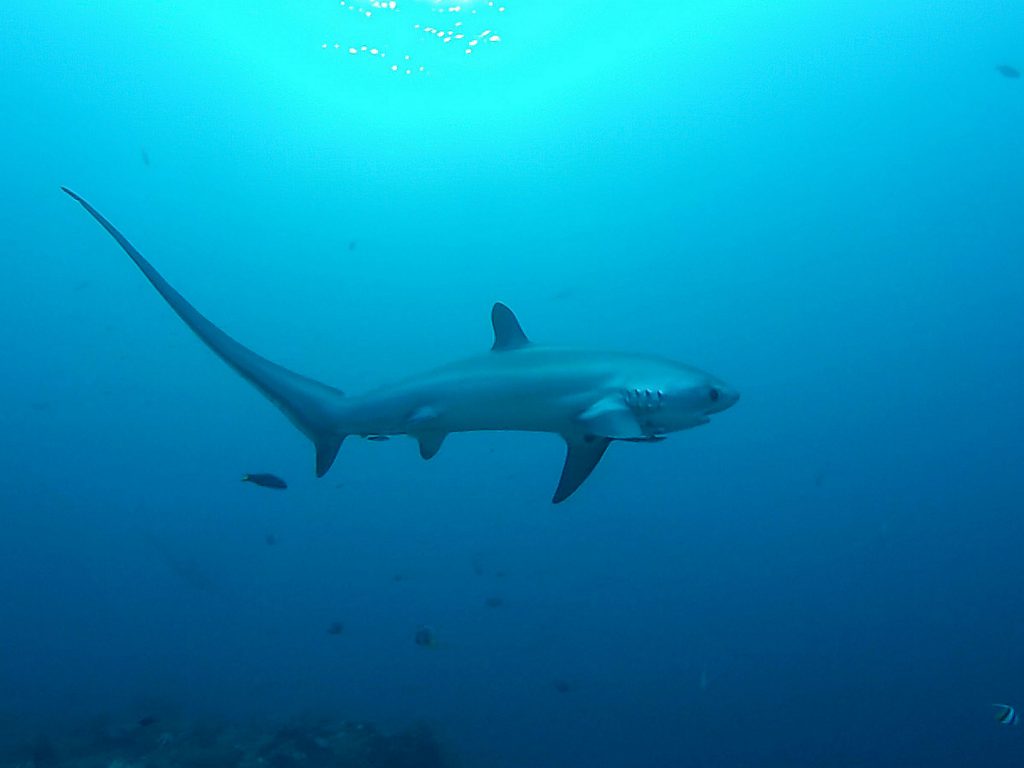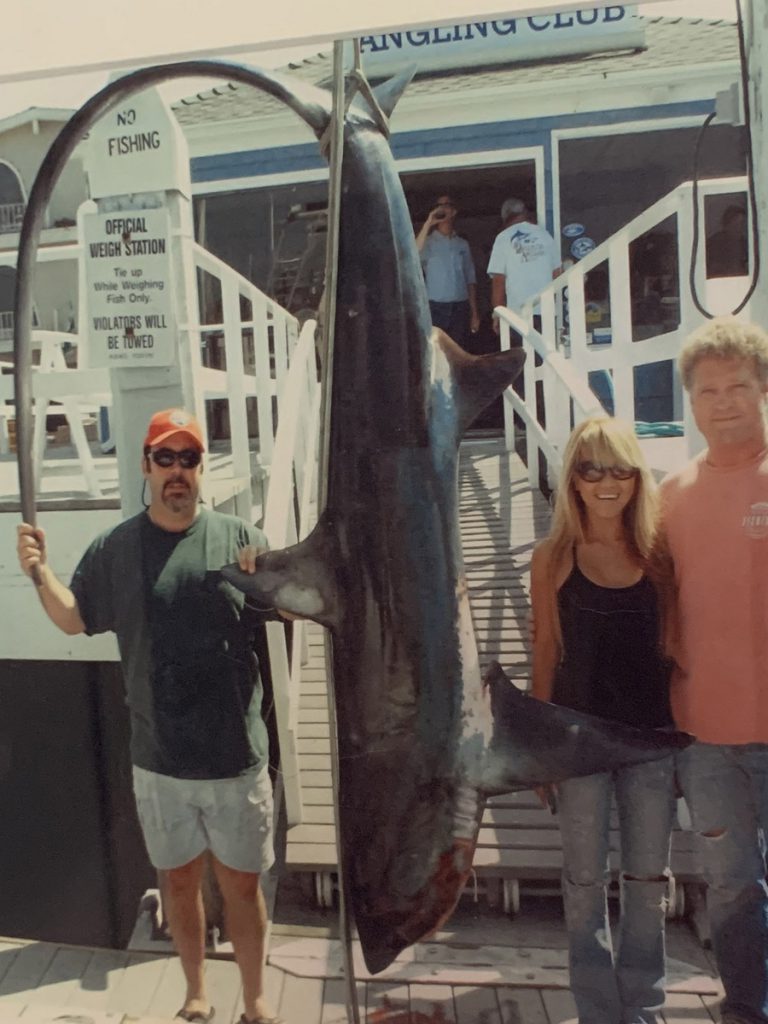
— Photo by Thomas Alexander / Wikipedia
Most Newport Beach residents are probably familiar with the great white sharks that patrol the waters off the coast of Orange County, and the speedy mako shark.
But there are other toothy residents that make their home offshore within Newport Submarine Canyon — thresher sharks.
The deep blue waters of California are prized for their big game fishing, but many don’t how close to home the thresher sharks can be found, noted Rebecca Johnson, founder of FishingBooker, in an email recently.
Thresher sharks are “one of the most exciting and unique game species,” the website’s guide to thresher shark fishing in Newport Submarine Canyon notes.
The nearby canyon is one of the best locations for thresher shark fishing, writes Sean.
“What’s special about the Newport Submarine Canyon is that it’s so close to one of the premier fisheries on the West Coast. Bewildering depths await just a few hundred feet off of Newport Pier,” Sean explains in the guide. “In a town renowned for its 30-plus mile offshore fishing, there’s a fishing treasure trove hidden right under the town’s nose.
Thresher sharks are known for using their whip-like tails to bludgeon their prey. They follow large schools of mackerel, squid, and anchovies alongside other predatory fish, including sea bass, which are a favorite among local anglers.
Newport Submarine Canyon channels a constant flow of nutrient-rich water that creates an ideal fish habitat.
Recreational fishermen often report they unintentionally hook thresher sharks, particularly when trolling for sea bass using live bait such as mackerel. The sharks will often strike the bait with their tail and get hooked.
In 2006, Daniel Greenberg of the Balboa Angling Club was trolling off of South Laguna when a 355-pound female thresher shark hit his line. The shark dragged the boat seven miles as it tried to escape.

— Photo courtesy of Daniel Greenberg
After a two-and-a-half-hour struggle, the shark suffered a heart attack and later died.
“My back hurt and my legs hurt,” Greenberg said.
Greenberg brought the thresher back to the Balboa Peninsula-based Club and its meat was divided up among many community members. The catch remains a club record for thresher sharks 13 years later.
“After that, I couldn’t do it anymore,” Greenberg said.
As the club’s current Weigh Master, Greenberg now advocates for the catch, photograph, and release of large predatory fish.
Chris Lowe, director of the Shark Lab at Cal State University Long Beach, said the Southern California thresher shark population has shown signs of recovery since its lowest point in the 1980s when it was widely fished with commercial gill netting.
“The common thresher seem to be coming back pretty well and that’s why the recreational fishermen are able to catch them,” Lowe said.
Thresher sharks’ slow recovery can partly be attributed to the fact females take about five to eight years to reach sexual maturity and then must carry their young for another nine months before giving birth.
When trawling for threshers, heavy tackle is required, for example, 80-pound monofilament with backing, because a large tail-hooked shark can take 300 yards in minutes, Chugey Sepulveda, director and senior scientist at The Pfleger Institute of Environmental Research, wrote in a 2007 article for Pacific Sport Fishing.
“When fighting a tail-hooked thresher, do not fight the fish from a straight up-and-down position. This will kill your back and the shark as well,” Sepulveda wrote. “Use the boat to your advantage, and get an angle on the fish.”
Lowe added that mouth-hooked threshers generally have a much better chance of surviving than tail-hooked sharks because they’re less likely to over-exhaust themselves.
Basically many of these [tail-hooked] fish aren’t going to do well and they’re probably going to die,” he said.
A circle hook baited with mackerel is the best bet for mouth-hooking threshers, Greenberg said. He added that novice fishermen shouldn’t attempt to bring in threshers because they can dangerously whip their tails at more than 50 mph.
“If you bring them in when they’re still hooked that’s when you have a problem,” he said. “They can break your arm or hand.”
Lowe acknowledges at least two big questions remain about sustainable fishing of threshers. First, recreational fishermen aren’t required to report their catches so it’s difficult to know how many they’re annually taking. Second, it’s uncertain how the warming ocean temperatures spurred by climate change will impact marine animals’ biology.
“Right now there doesn’t appear to too big of a recreational take,” Lowe said.
For more information, visit balboaanglingclub.org, csulb.edu/shark-lab, and fishingbooker.com.




